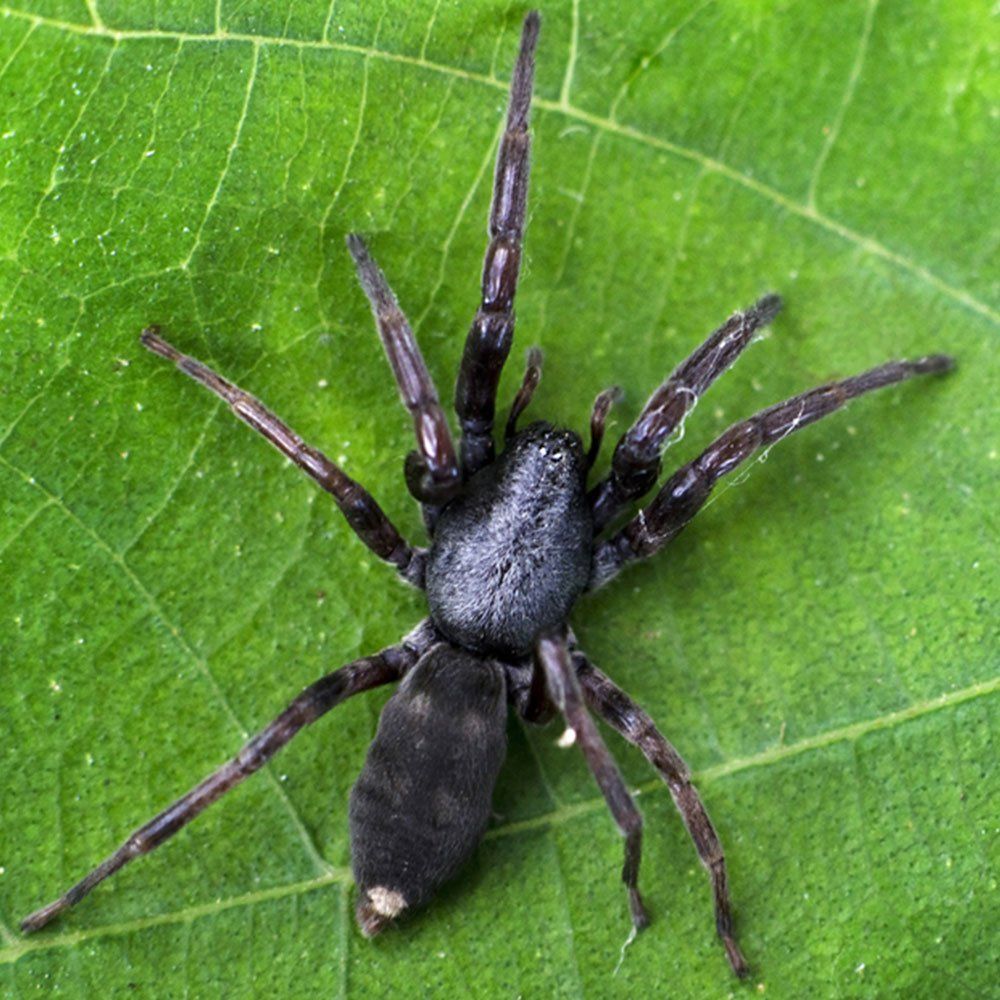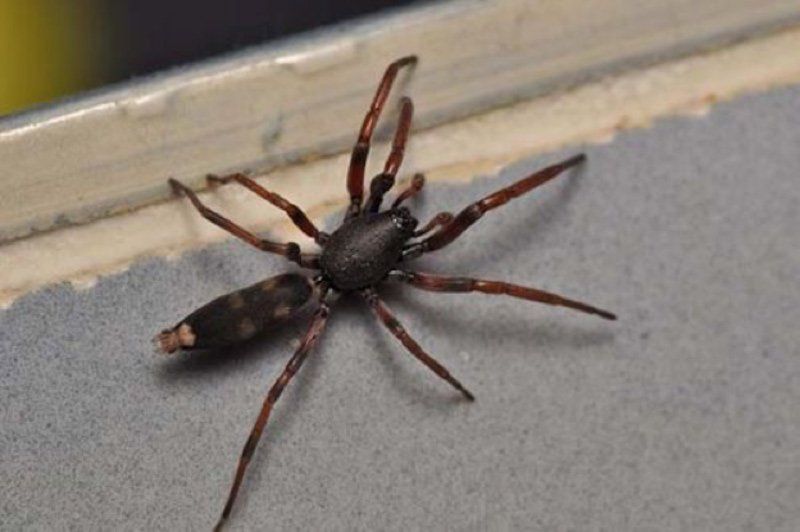White Tail Spider
White Tail Spider
> Back to Pest Library



White-tailed Spider(L. cylindrata)
White tailed spiders are found in most regions of Australia.
White-tailed Spiders have a dark reddish to grey, cigar-shaped body (body length in males is about 12 mm, and up to 18 mm long in females); the legs are banded with dark orange-brown. The grey dorsal abdomen bears two pairs of faint white spots (less distinct in adults) with a white spot at the tip; in males, a hard, narrow plate or scute is present on the front of the abdomen.
White-tailed Spiders are vagrant hunters that live beneath bark and rocks, in leaf litter, logs and detritus in bush, gardens, fences and houses. Tufts of specialised brush-like hairs on the end of their legs allow them to walk easily on smooth or sloping surfaces. They make temporary silk retreats and spin disc-shaped egg sacs, each containing up to 90 eggs. They are most active at night when they wander about hunting for other spiders, their preferred food. They are known to eat curtain-web spiders daddy-long-legs spiders, Redback Spiders and black house spiders During summer and autumn, White-tailed Spiders are often seen hunting in and around houses, where they find sheltered nooks and crannies, and numerous Black House Spiders, their favoured prey.
White-tailed spider bites can cause initial burning pain followed by swelling and itchiness at the bitten area. Occasionally, weals, minor localised blistering or local ulceration have been reported, and together with minor bacterial infection of the wound may contribute to conditions known medically as "necrotising arachnidism".
It is still uncertain whether White-tailed Spiders are involved in cases of severe skin ulceration seen in patients with a probable spider bite. Typically, in such cases no direct evidence of spider bite is available. Sensational media reporting of supposed cases of severe "necrotising arachnidism" has given White-tailed Spiders a bad reputation. Ulcerative skin lesions can have many causes, notably involving various bacterial or fungal infections. A recent study of confirmed White-tailed Spiders bites found no cases of ulceration, backing up the results of an earlier study. The evidence suggests that skin ulceration is not a common outcome of White-tailed Spider bite.
What should you do if you get bitten by a white-tail spider?
It may be painful, but do not panic, always clean the area of your bite. The most common treatment for white-tail spider bites is icepacks to reduce the swelling. Other than that, there are no other necessary first-aid treatments, just make sure your tetanus shot is up to date like any other spider bite or wound.
White-tailed Spiders around your house can be controlled by regular treatment of your home.

For more information
contact us today...
contact us today...
Phone:
02 4365 0596
Email:
Servicing Sydney, Central Coast
and Newcastle areas
Fully licensed and insured
Contact Us
Thank you for contacting us.
We will get back to you as soon as possible.
We will get back to you as soon as possible.
Oops, there was an error sending your message.
Please try again later.
Please try again later.
Talk to your
local experts
in Pest Control and Inspection Services
Talk to your
local experts
in Pest Control and Inspection Services
Our innovative pest control service is guaranteed to rid your premises of your insect problems, while our protection services make sure your property is always protected.
QUICK CONTACT
Thank you for contacting us.
We will get back to you as soon as possible.
We will get back to you as soon as possible.
Oops, there was an error sending your message.
Please try again later.
Please try again later.
CONTACT INFO
Address:
PO Box 3599, Erina NSW 2250
Phone:
Email:
Fully licensed and insured
